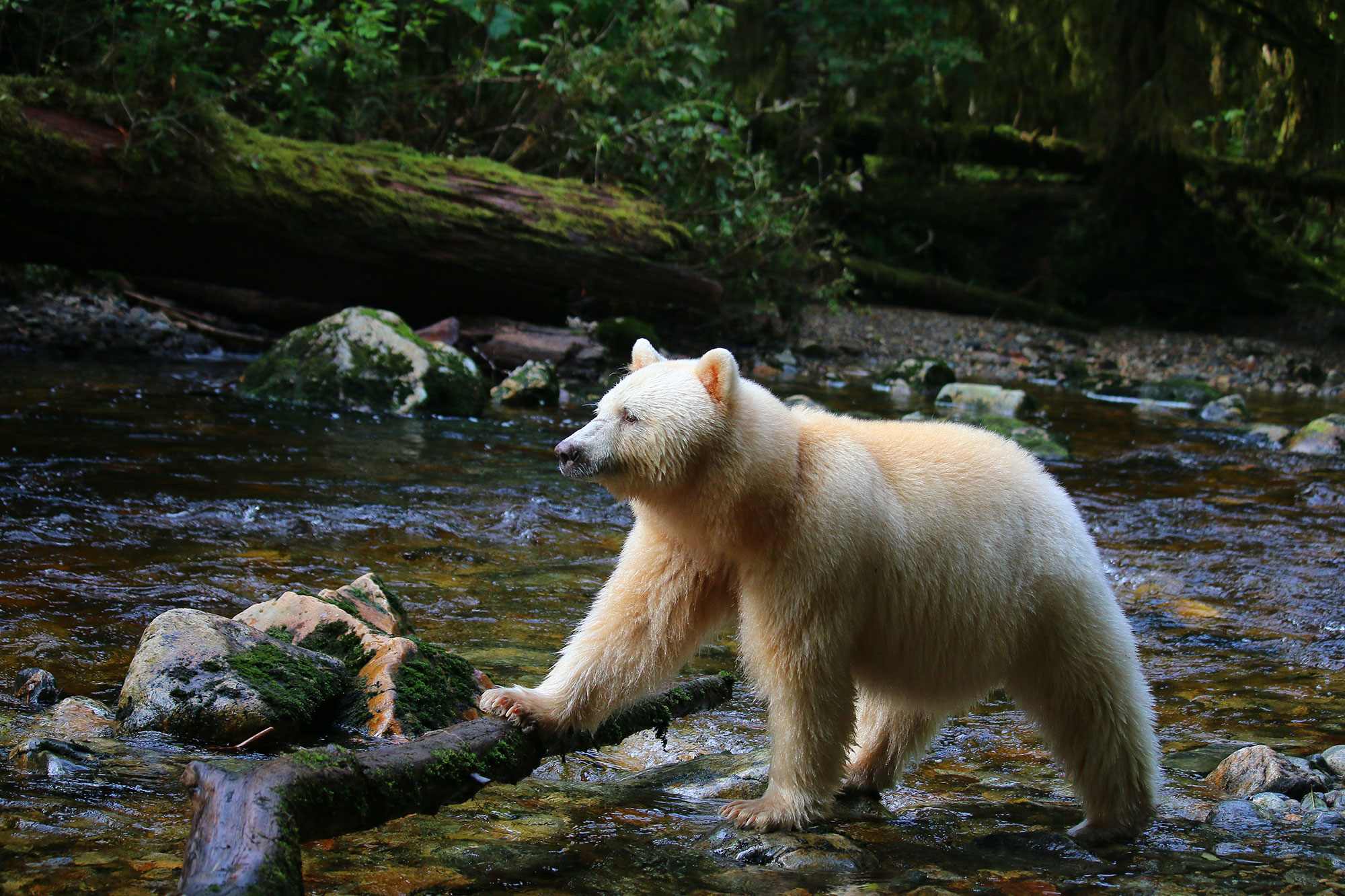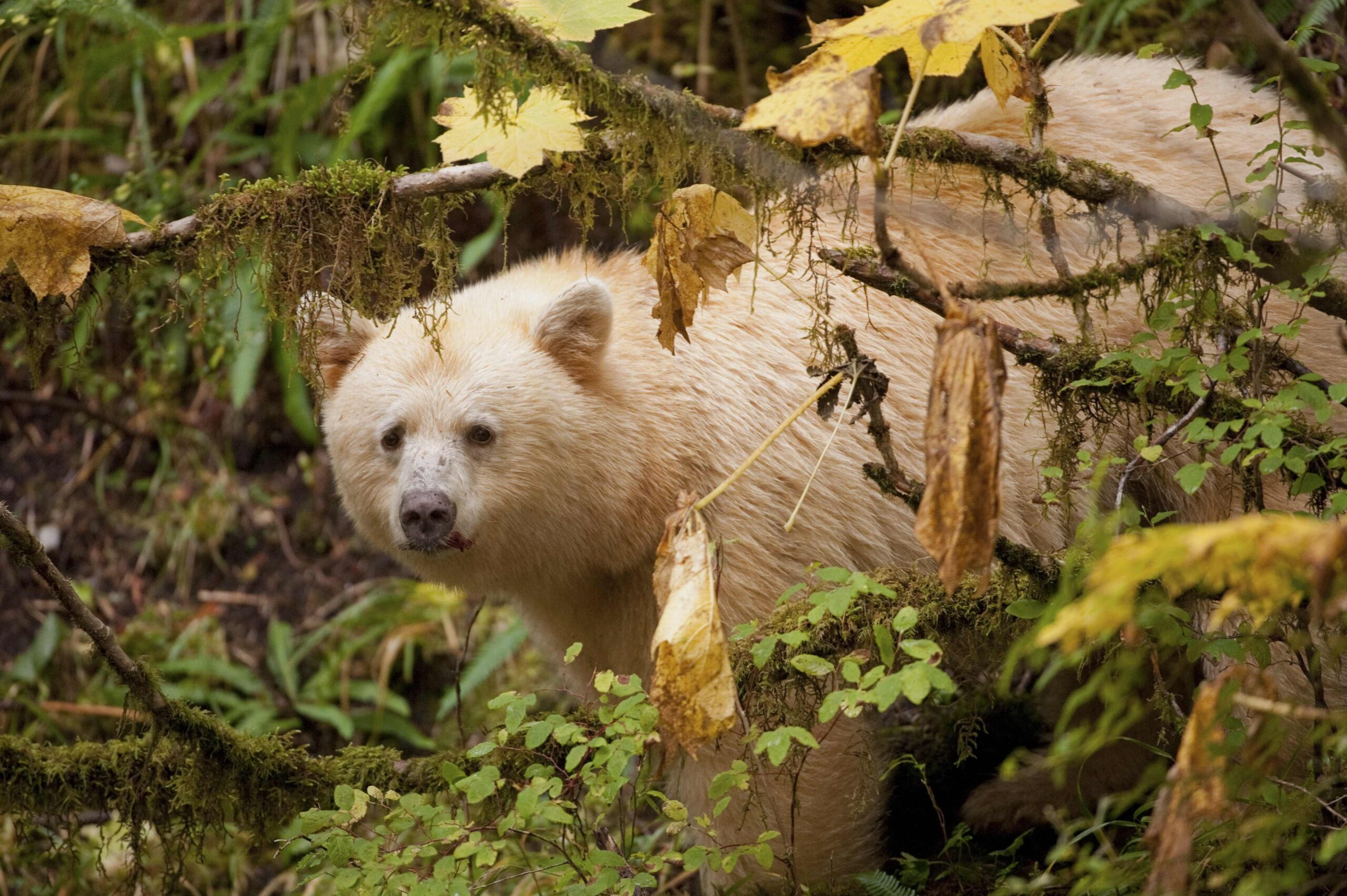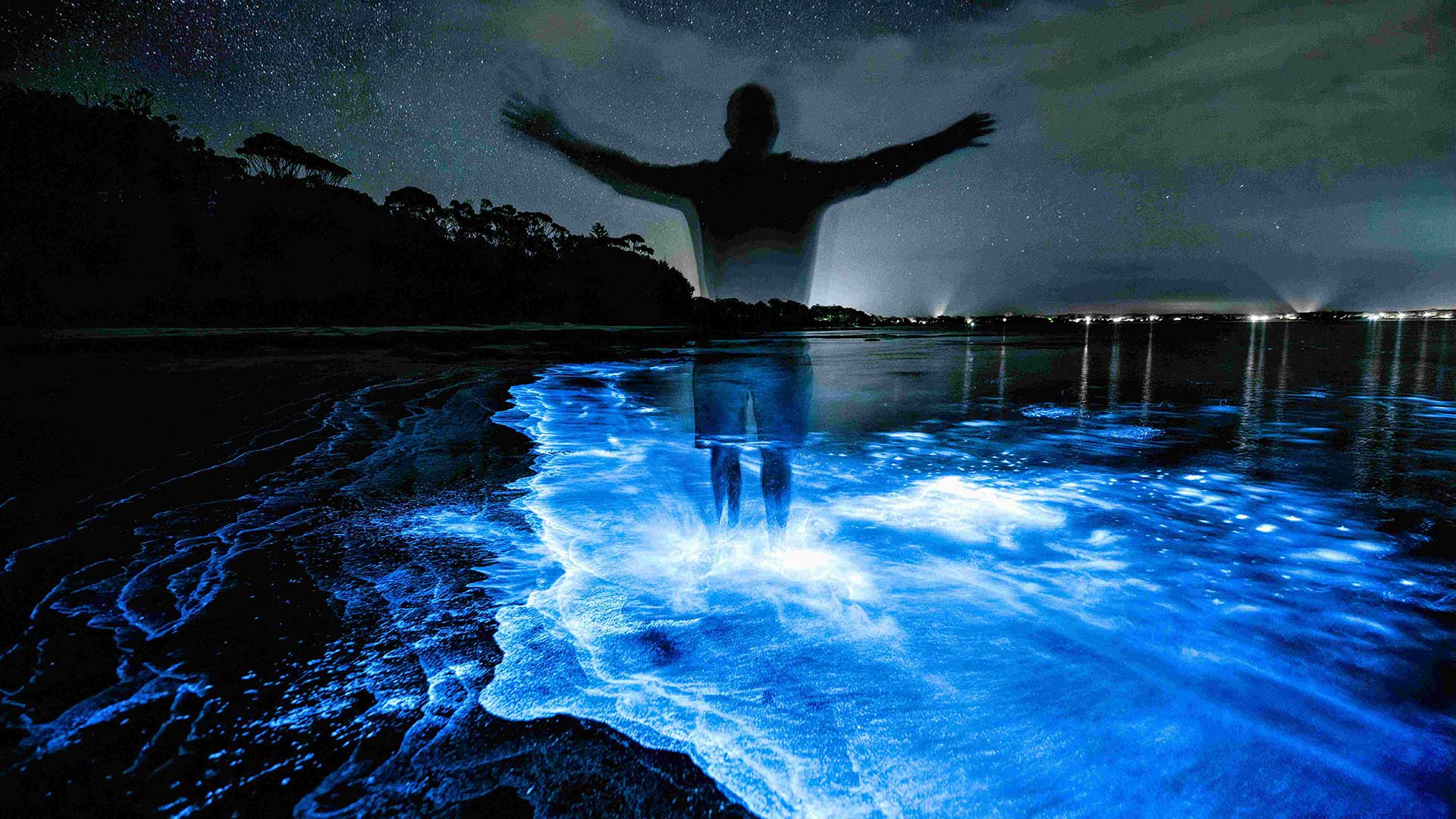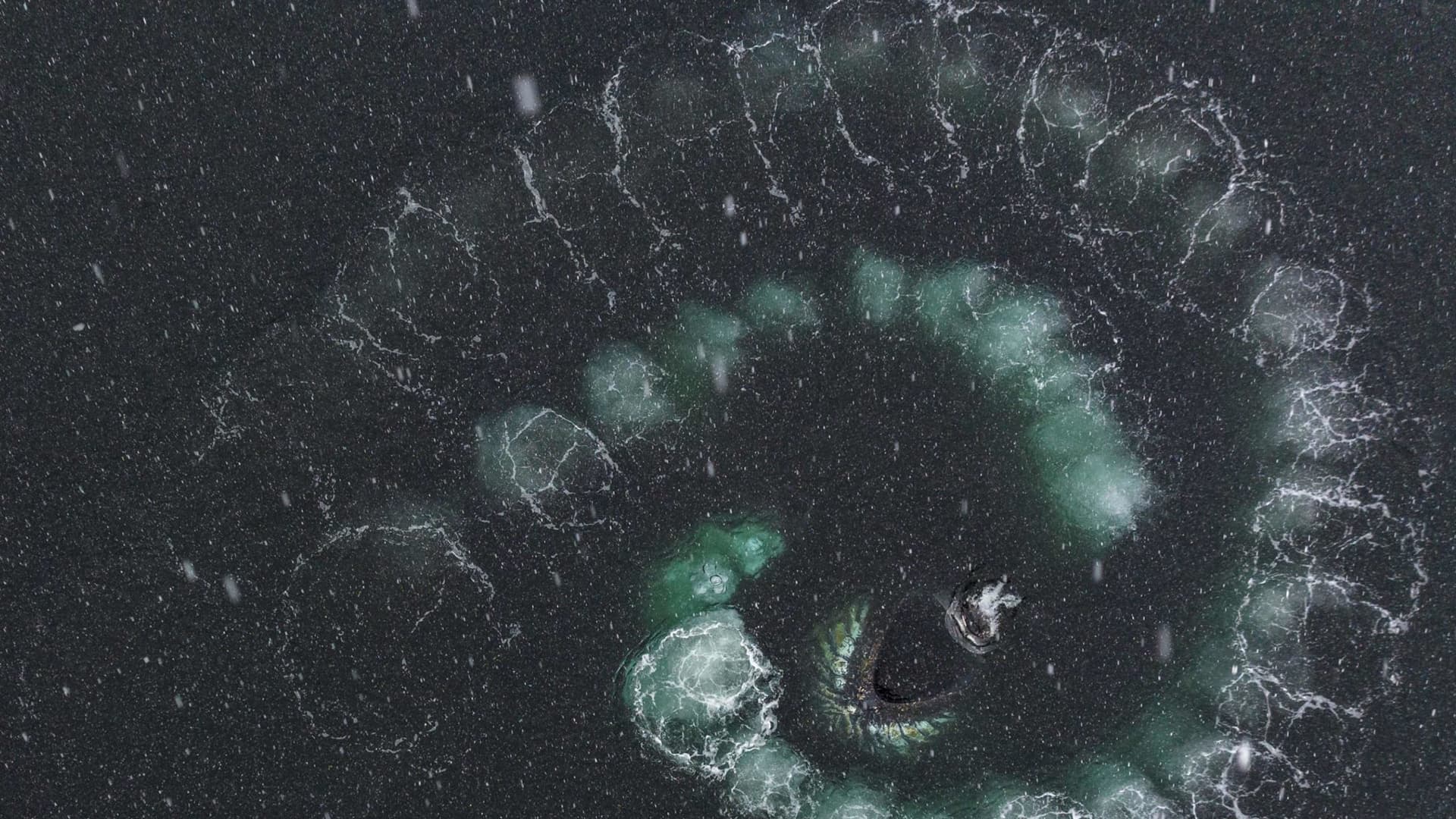Expedition yachts provide front-row seats to some of nature’s most awe-inspiring displays, allowing guests to travel to far-flung destinations where the natural world operates outside of the bounds of everyday life. From volcanic eruptions to glacial calvings, these phenomena are reminders of the power and wonder of our wild landscapes. In the far reaches of the Pacific Northwest, an elusive bear is a reminder of the mysticism that can be found in nature.
There are few roads into British Columbia’s Great Bear Rainforest. To get to the region’s lush expanse of old-growth forests, winding rivers, and rugged coastlines of this temperate rainforest (one of the largest in the world), most travelers must take a boat or small floatplane. The voyage alone adds an air of mysticism to the place, even before you spot the wildlife that calls it home.
Prowling within this wooded swath of earth is the Spirit Bear. Also known as the Kermode bear, these bears are a rare subspecies of the North American black bear (Ursus americanus) characterized by its unique cream-colored fur. The Great Bear Rainforest is the only place in the world to spot them.
The Spirit Bear’s striking appearance is not a result of albinism, as one might assume. Instead, these bears carry a recessive gene that manifests in a stunning, almost ghostly coat. Only about 1 in 10 black bears in this region carry the Spirit Bear gene; fewer than 400 are estimated to exist. Encountering one in the wild is a rare, thrilling privilege.
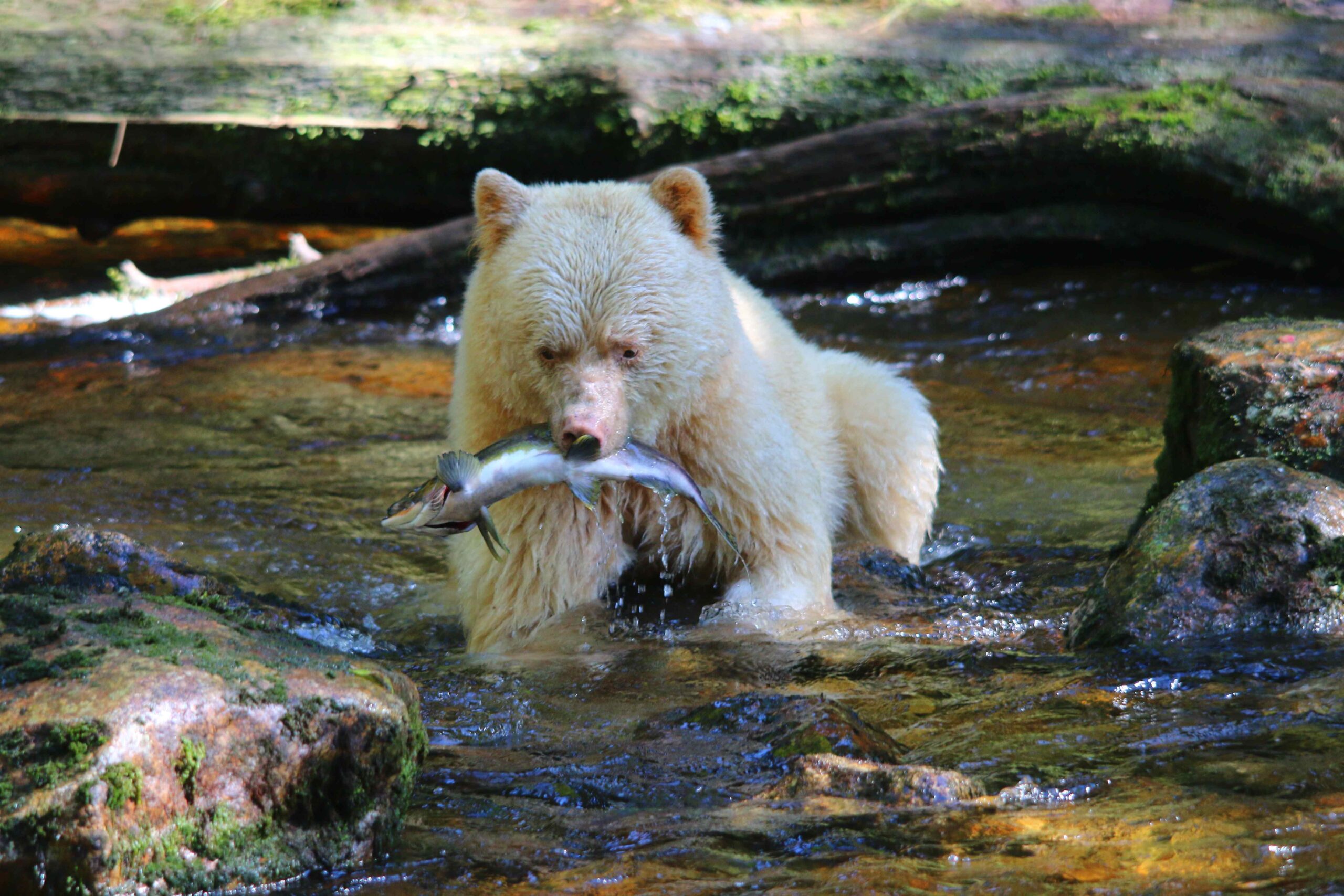
For the indigenous peoples of the region, the Spirit Bear holds profound cultural significance. In the Gitga’at and Kitasoo/Xai’xais First Nations, the bear is often considered a symbol of peace and harmony, embodying the delicate balance between nature and humanity. Legends and stories are woven around these creatures, passing down the importance of coexistence with the natural world.
Despite their revered status and cultural significance, Spirit Bears face numerous threats. Habitat loss, climate change, and the potential risks associated with resource development are among the many challenges to their survival. Conservation efforts, including protected areas and sustainable forestry practices, play a crucial role in ensuring the continued existence of these remarkable bears. Across the Great Bear Rainforest and neighboring Haida Gwaii, indigenous-led efforts have resulted in the protection of 7.4 million acres according to some of the most stringent forestry rules and regulations in the world.
The Spirit Bears of British Columbia weave together threads of ecological importance and cultural significance in a powerful way that one must see to believe.
